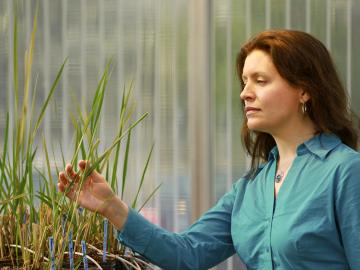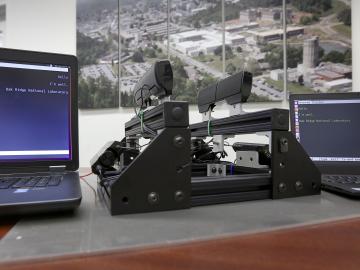Filter News
Area of Research
News Topics
- Biology (1)
- Biomedical (1)
- Climate Change (1)
- Composites (1)
- Computer Science (3)
- Cybersecurity (2)
- Energy Storage (1)
- Fusion (1)
- Grid (2)
- Isotopes (3)
- Materials Science (2)
- Microscopy (1)
- Molten Salt (1)
- Nanotechnology (1)
- Nuclear Energy (2)
- Physics (1)
- Polymers (2)
- Security (2)
- Space Exploration (1)
- Transportation (3)
Media Contacts


Thanks in large part to developing and operating a facility for testing molten salt reactor (MSR) technologies, nuclear experts at the Energy Department’s Oak Ridge National Laboratory (ORNL) are now tackling the next generation of another type of clean energy—concentrating ...

“Made in the USA.” That can now be said of the radioactive isotope molybdenum-99 (Mo-99), last made in the United States in the late 1980s. Its short-lived decay product, technetium-99m (Tc-99m), is the most widely used radioisotope in medical diagnostic imaging. Tc-99m is best known ...
For the past six years, some 140 scientists from five institutions have traveled to the Arctic Circle and beyond to gather field data as part of the Department of Energy-sponsored NGEE Arctic project. This article gives insight into how scientists gather the measurements that inform t...

Esther Parish’s holistic approach to life is apparent not only in her environmental research at Oak Ridge National Laboratory, but in her careful cultivation of a future crop of young scientists. Her expertise as a geographer coupled with a keen interest in the natural world drives Parish’s resea...


Christina Forrester’s meticulous nature is a plus for her work leading technical testing and analysis of radiological and nuclear detection devices, whether that work takes her to the Desert Southwest or to her own lab outfitted with specialized


Using novel machine learning techniques, a research team from the Department of Energy’s Oak Ridge National Laboratory is teaching electronic devices how to speak for themselves.
University of Wisconsin-Madison engineers have added a new dimension to our understanding of why straining a particular group of materials, called Ruddlesden-Popper oxides, tampers with their superconducting properties. The findings, published in the journal Nature Communication...




